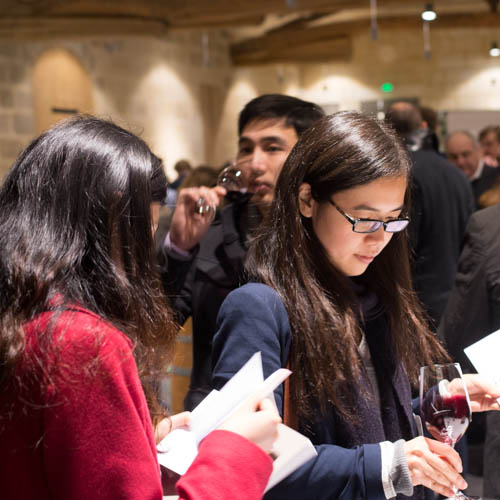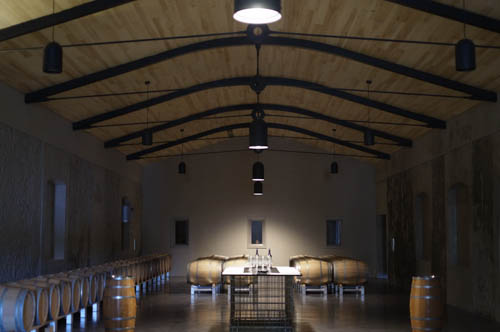by Wine Owners
Posted on 2016-06-10
There’s a clear division between 2015 En Primeur releases before Vinexpo Hong Hong and those that have been announced since. It begs the question, why?
It's not just that the bigger Chateaux are the ones releasing later. After all, many important names had released well beforehand.
The answer is what happened whilst the producers were in Hong Kong.
We understand that producers were taken aback by the demand they experienced this year at Vinexpo, and they boarded the flight home with bulging order books.
For every producer who wants to sell the new wines through En Primeur and recognises the importance of providing a future upside for buyers of non-physical stock, there are others who see a new opportunity within the changing global fine wine market.
Bernard Magrez was full of the joys of spring at Vinexpo Hong Kong, confirming he had sold out of his impressive Chateau Pape Clement in 40 minutes.
He was refreshing in his analysis, saying that he knew he’d left money on the table for the merchant and En Primeur buyer, which he saw as a positive for the property’s burgeoning reputation. Surely if you’re going to be part of En Primeur that’s the way to do it: body and soul.
Many others however have been eyeing life after En Primeur for some time, but have held back from backing one horse or another by the generally morose market conditions. With green shoots appearing over the last 12 months, few were in the mood to risk seeing them wither.
But what they experienced at Vinexpo may have shifted the balance further away from genuine, tangible broad-based support for En Primeur.
The Chateaux owners were surprised by the jump in orders experienced for their back vintages. There was a realisation that the wine market in China was coming back after 4 years of austerity and Party approbation.
The politics seem to be loosening up a touch, the consumer is spending again and contributing strongly to GDP growth, imports of luxury goods are steady (and proportionately performing better than exports).
Not that the Chinese buy En Primeur, there’s still almost no market there for it there, but with physical stocks in Bordeaux being soaked up by a sharp uptick in demand, it’s hardly surprising many producers are choosing to hold onto significantly more of the new vintage, so that they can serve the Asian market further down the line.

What a relief it must be to see all those accumulated bottles sell.
If it’s all heading towards producers being the stockholders and focusing on selling back vintages at premium prices, the one thing I’d say to them is, don't confuse the issue by using the En Primeur system as purely a promotional opportunity in the marketing calendar to get press and attention, if you don't care so much if any actually sells. It creates mixed messages.
I am super-impressed by what Palmer are doing in terms of developing sales channels worldwide, focusing on selling physical stock, staging stunning auctions through their negociant shareholder, creating a brand to rival the Firsts - but the En Primeur thing just muddies the water and undermines the brilliance of everything else.
If the recent Sotheby’s auction of Chateau Palmer in Hong Kong points the way to selling En Primeur by the barrel to high rollers with privileged access thrown in, I would surely go down that route as a producer too. The equivalent of £10,800 per 9 litres (12x75cl) before seller commission is simply amazing if you can get it.

“Chapeau”. I raise my hat to the Chateaux who go the full-on brand-building route and do it this well - but why risk the negative sentiment and comments that a perceptually very high En Primeur release price creates? There are simply too many foreseeable consequences: negative comments (mea culpa); anxious merchant emails to clients warning them off; negociants dropping prices during the course of the same day the release happens in a mildly desperate attempt not to be left with expensive stock that might/ will have to be written down; and static or lower secondary market prices that will make consumer buyers feel negative about the brand due to being under water ‘x’ years down the line.
With Asian appetite for Bordeaux on the rise once again, the moment may have arrived when more and more producers will respond to the shift in demand for primary market releases of back vintages by backing the new horse. It’s a complicated decision with a brew of old allegiances, dependent market structures, local friends, brand building, rising land values and a changing global market. Watch this space.
by Wine Owners
Posted on 2016-06-08
Remember spring 2011. In Bordeaux there was an early April heatwave, that added to the feel-good factor felt by producers and merchants alike. All agreed, this was a golden age for Bordeaux.
The wealthy were getting wealthier, raiding the post–Lehmann EU Agricultural Support Fund, citing 'agriculture' status so that they could construct new chais. It seemed taking the piss had become institutionalized.
By the late summer, barely 4 months after that balmy spring, it was over. The bubble had burst, but not before the world and his wife had piled into overpriced Classed Growths.
Fast forward 5 years, and the negative market sentiment created by those purchases by traditional and new En Primeur buyers has all but dissipated. The good news is those who were deeply under water on the back of 2009 and 2010 purchases are now in the shallows and feeling rather more positive about their purchases and their outlook.
This has been helped by the fact – there, I said it, by the FACT - that there hasn’t been a vintage to touch those two monumental years since. Not 2011 and 2013 of course, neither 2012 nor 2014, and surely not 2015 either. To be a great vintage Bordeaux needs to be uniformly wonderful across its communes, and 2015 was far from uniform. It’s a very good vintage overall, but not a great one. It will not join the pantheon.
The prime reason why Bordeaux suffered so badly over the period 2011-2014 was negative sentiment, and nothing fuels negative feelings like losing money on paper.
It is for that reason 2015 may well prove to be a watershed in the history of En Primeur.
Many Chateaux released at realistic prices that made their wines sensible buys – wines like Pape Clément, Rauzan-Segla and Canon, Leoville Barton, Pontet Canet, even Lafleur and Tertre-Rotebouef.
More Chateaux than not released too high. What do we mean by “too high”? After all, it’s a relative term. Our definition of too high is a price that will prove not to give a discount against future market value or which could end up having been more expensive than the future discounted secondary market value in 2-5 years’ time.
In the last few days, a few Chateaux have pushed the boundaries of credulity, releasing wines at such a high price that there is 90%-99% downside attached to buying early.
Wines such as Pichon Baron, Lynch-Bages and Palmer. As the graphs show, none offer much by way of upside and plenty of downside risk.
None of this matters to the informed, rational fine wine buyer. They simply need to say ‘no thanks’ and move on, selecting affordable back-vintages to enjoy, lay down for future drinking, or to use as a store of value.
What does matter is when less well-informed buyers are badly advised and sold into the vintage’s more expensive releases, only to find out a few years down the line that the wine has fallen in value, those losses further exacerbated by broker commissions. If you end up with enough buyers “under water” goodwill built up painstakingly over time evaporates.
In this campaign some merchants are saying things like:
Qualitatively, 2015 has been compared to previous greats of this century - 2010, 2009, 2005 and 2000 – when looking at price compared to these greats, the wines of 2015 have broadly represented good value with most estates benchmarking against these years and releasing at lower prices – which is quite refreshing.
Not only is the premise wrong, it encourages irrational buying behavior based on unrealistic expectations and stores up future negative sentiment.
This is a shame, for Bordeaux has the greatest, largest single body of wine in the world to offer. The greatest expressions should bring the greatest joy, not deliver disappointment.

